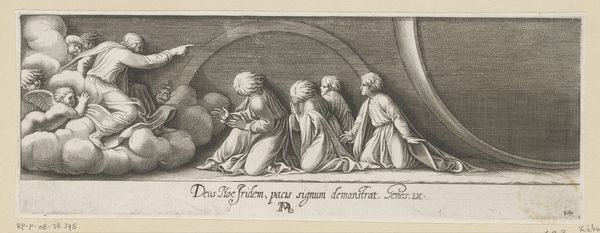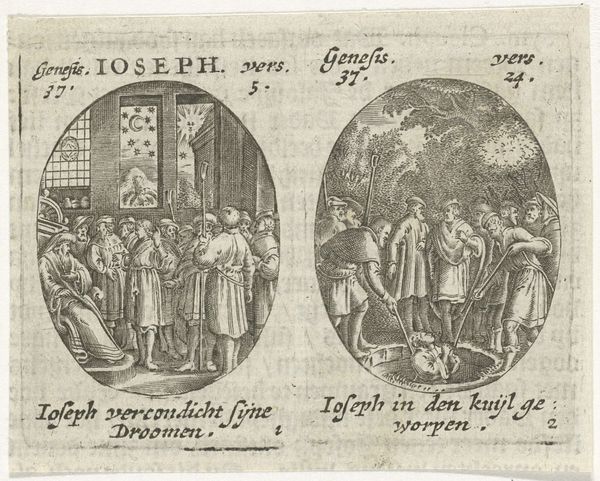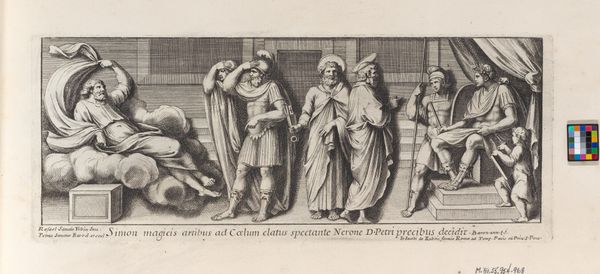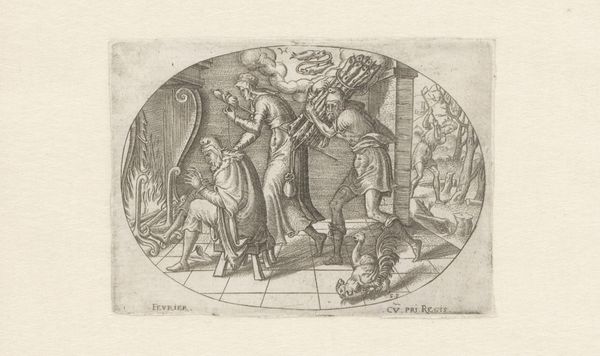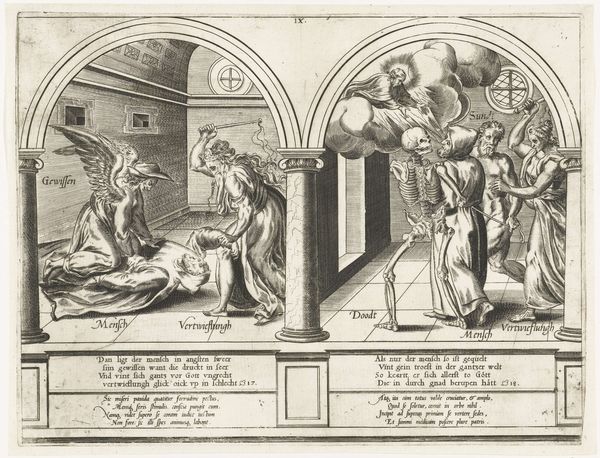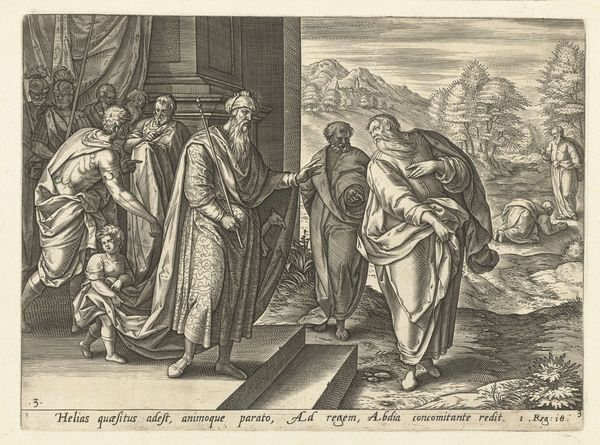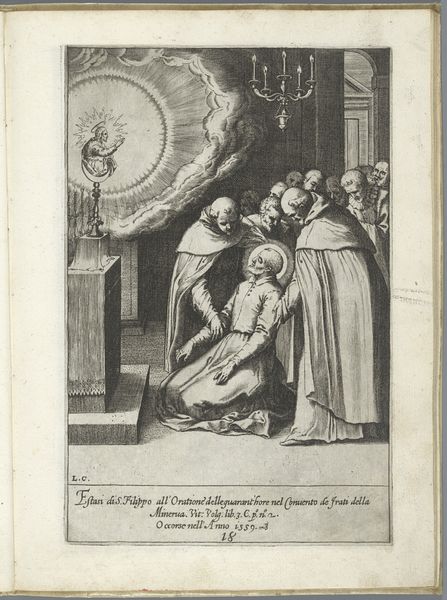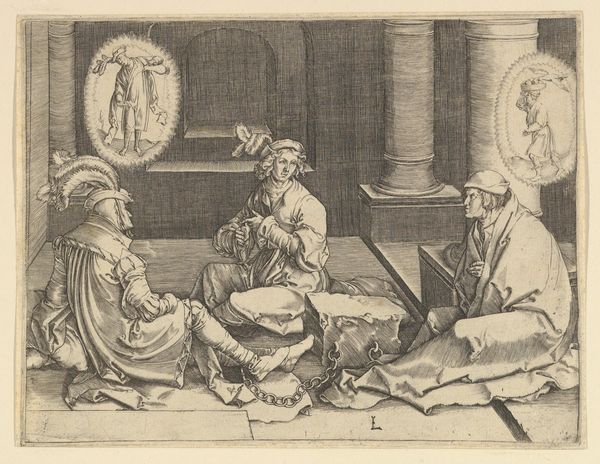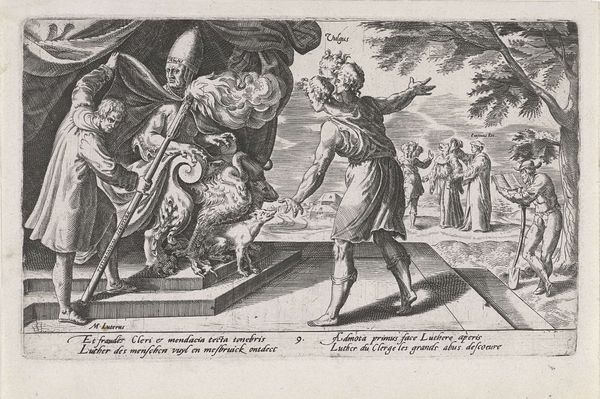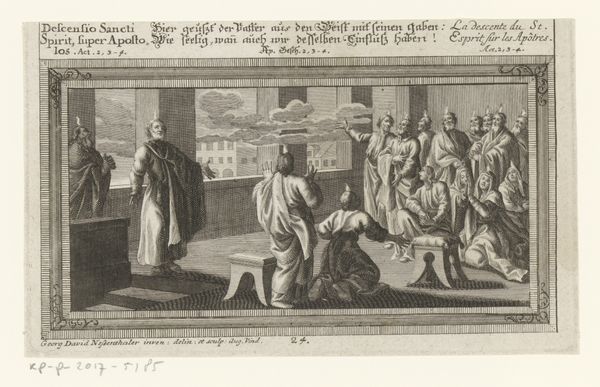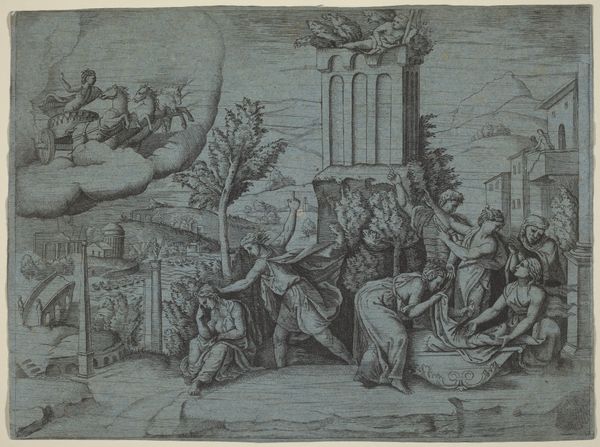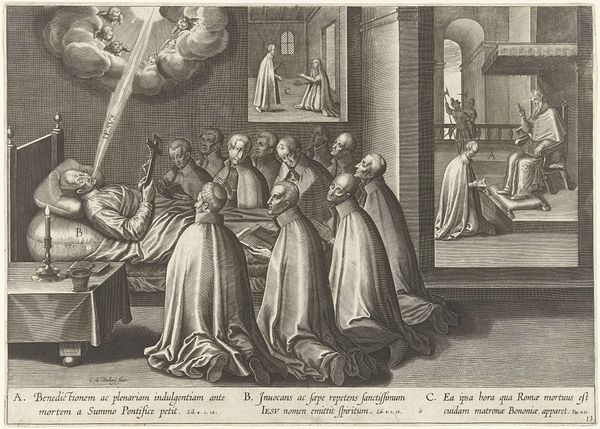
Plate 3: God Addressing Noah and his Sons, from Genesis Chapter 3, after a lost fresco in the basamento of Bay 13 of the Vatican Loggia 1650 - 1677
0:00
0:00
drawing, print, engraving
#
drawing
#
baroque
# print
#
history-painting
#
engraving
Dimensions: Sheet: 3 9/16 × 9 7/16 in. (9.1 × 24 cm) Plate: 3 3/8 × 9 1/8 in. (8.6 × 23.2 cm)
Copyright: Public Domain
Curator: Alright, let's have a closer look at this print. It's entitled "Plate 3: God Addressing Noah and his Sons, from Genesis Chapter 3, after a lost fresco in the basamento of Bay 13 of the Vatican Loggia," created sometime between 1650 and 1677. The artist is Pietro Santi Bartoli. It's currently held here at the Metropolitan Museum. Editor: Wow, a mouthful of a title! But putting that aside, I find the almost muted quality quite compelling. There's a solemn reverence captured, wouldn’t you agree? A mix of awe and submission in those figures. It feels profoundly heavy with narrative weight. Curator: Indeed. Bartoli was documenting lost frescoes, essentially preserving a visual record. The narrative itself stems from the biblical story of Noah after the flood, specifically God establishing a covenant. The rainbow depicted symbolizes that promise, right above Noah and his sons who kneel on the left, and God and his host on the right. Editor: The use of line is striking! It’s as though light itself is etched into the paper. Makes me consider: Did Bartoli mourn what he recorded as “lost”? It all makes me consider impermanence. Is the artist reminding us about the frailty of human existence? Curator: I think Bartoli was probably conscious of his role. The Vatican Loggia was undergoing transformations; these engravings served a documentary purpose as the original frescoes faced decay or alteration. The creation of prints democratized access. Viewers far removed from the Vatican could now ponder these works, sparking their own reflections. Editor: Thinking of democratizing art reminds me about making space for individual interpretation! It invites conversations, challenges the dominance of singular narratives... Art gets to do some magic. So Bartoli—whether he was trying to or not—helped expand who got to consider these themes, yeah? Curator: Precisely! The politics of visibility and preservation play a critical role here, demonstrating how an artist’s choices about documentation impact public understanding. By giving access to a visual memory, this work makes history a little more alive. Editor: So, next time I am overwhelmed, maybe I should look at old engravings and make my own covenants. I walk away thinking: Loss isn’t always loss; sometimes it’s transformation into something newly accessible.
Comments
No comments
Be the first to comment and join the conversation on the ultimate creative platform.
